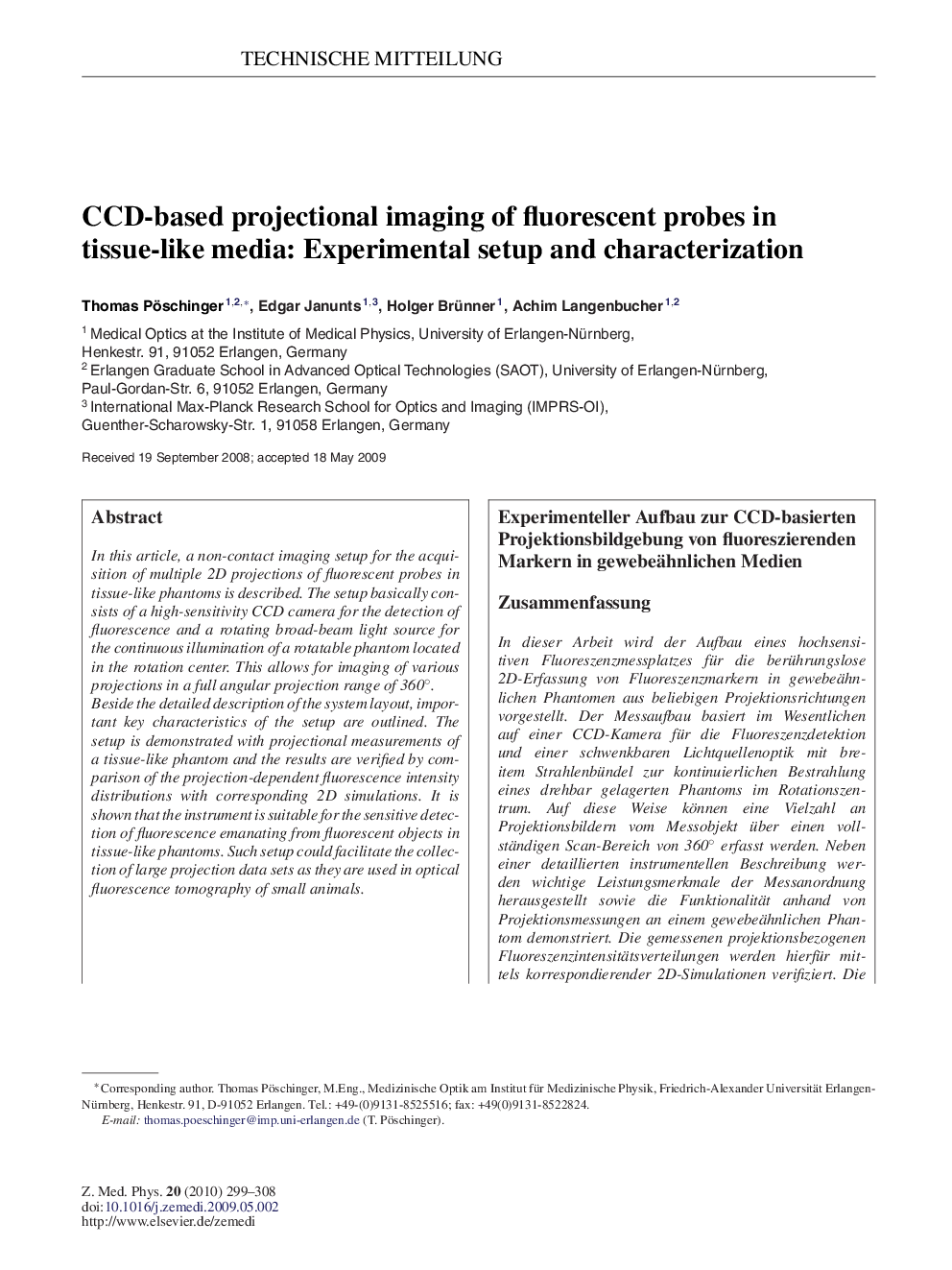| Article ID | Journal | Published Year | Pages | File Type |
|---|---|---|---|---|
| 1888149 | Zeitschrift für Medizinische Physik | 2010 | 10 Pages |
In this article, a non-contact imaging setup for the acquisition of multiple 2D projections of fluorescent probes in tissue-like phantoms is described. The setup basically consists of a high-sensitivity CCD camera for the detection of fluorescence and a rotating broad-beam light source for the continuous illumination of a rotatable phantom located in the rotation center. This allows for imaging of various projections in a full angular projection range of 360°.Beside the detailed description of the system layout, important key characteristics of the setup are outlined. The setup is demonstrated with projectional measurements of a tissue-like phantom and the results are verified by comparison of the projection-dependent fluorescence intensity distributions with corresponding 2D simulations. It is shown that the instrument is suitable for the sensitive detection of fluorescence emanating from fluorescent objects in tissue-like phantoms. Such setup could facilitate the collection of large projection data sets as they are used in optical fluorescence tomography of small animals.
ZusammenfassungIn dieser Arbeit wird der Aufbau eines hochsensitiven Fluoreszenzmessplatzes für die berührungslose 2D-Erfassung von Fluoreszenzmarkern in gewebeähnlichen Phantomen aus beliebigen Projektionsrichtungen vorgestellt. Der Messaufbau basiert im Wesentlichen auf einer CCD-Kamera für die Fluoreszenzdetektion und einer schwenkbaren Lichtquellenoptik mit breitem Strahlenbündel zur kontinuierlichen Bestrahlung eines drehbar gelagerten Phantoms im Rotationszentrum. Auf diese Weise können eine Vielzahl an Projektionsbildern vom Messobjekt über einen vollständigen Scan-Bereich von 360° erfasst werden. Neben einer detaillierten instrumentellen Beschreibung werden wichtige Leistungsmerkmale der Messanordnung herausgestellt sowie die Funktionalität anhand von Projektionsmessungen an einem gewebeähnlichen Phantom demonstriert. Die gemessenen projektionsbezogenen Fluoreszenzintensitätsverteilungen werden hierfür mittels korrespondierender 2D-Simulationen verifiziert. Die Messergebnisse zeigen, dass die Messanordnung für die sensitive Erfassung von Fluoreszenzsignalen aus diffusen, gewebeähnlichen Medien geeignet ist und daher eine unkomplizierte Methode zur Projektionsdatengewinnung zur Verfügung stellt, wie sie in der berührungslosen Kleintier-Fluoreszenztomographie benötigt werden.
